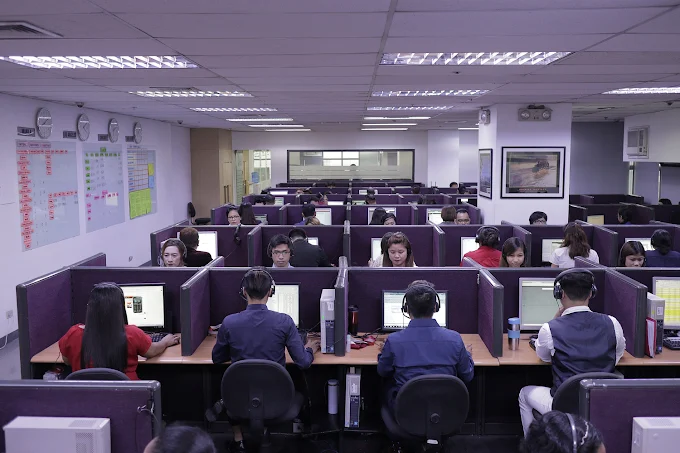Introduction to Coworking Spaces and Seat Leasing
The modern workspace landscape is continually evolving, driven by the need for flexibility and adaptability in work environments. Two prominent concepts that have emerged to cater to these demands are coworking spaces and seat leasing. Both options offer distinct advantages that align with the changing workforce dynamics, making them increasingly sought after by freelancers, startups, and established businesses alike.
Coworking spaces are shared work environments where individuals from various professional backgrounds work independently or collaboratively. These spaces typically offer amenities such as high-speed internet, meeting rooms, and communal areas, fostering a sense of community and networking among diverse professionals. Coworking is particularly popular among freelancers and startups, as it provides a more cost-effective solution compared to traditional office leases. Furthermore, the collaborative nature of coworking encourages creativity and innovation, making it an attractive option for those seeking inspiration and support.
On the other hand, seat leasing presents a more structured approach to workspace utilization. In this arrangement, companies can lease specific workstations within a larger facility, often provided by dedicated providers such as oneTRUgroup or TRU Group. This model allows businesses to rent only the number of seats they need, reducing overhead costs and offering scalability as the organization grows or contracts. The seat leasing option combines the benefits of a corporate environment with the flexibility of shared office space, appealing to a wider array of companies, including those seeking a full-service solution for their operational needs.
As remote work continues to gain traction, both coworking spaces and seat leasing are essential components of flexible work arrangements. They not only provide physical spaces for productivity but also facilitate collaboration and connection among diverse professionals and organizations. By understanding their differences, businesses can choose a model that best fits their requirements, thereby optimizing their operational efficiency and fostering a dynamic work culture.
What is Coworking Space?
Coworking spaces represent a modern approach to work environments, characterized by shared office facilities that cater to freelancers, remote workers, and small businesses. These spaces are designed to foster an atmosphere of collaboration and creativity, offering flexible structures that can adapt to various business needs. Typically, the layout of a coworking space includes open work areas, private offices, meeting rooms, and dedicated desk options, allowing professionals to select a working environment that suits their preferences.
Many coworking spaces come equipped with a range of amenities, such as high-speed internet, printing services, kitchen facilities, and comfortable lounge areas. These features not only enhance productivity but also contribute to a more enjoyable workplace experience. Additionally, coworking spaces often host events, workshops, and networking gatherings, providing opportunities for members to connect, share insights, and collaborate on projects. This community-focused approach is a hallmark of coworking environments, making them appealing to individuals seeking both efficient workspaces and a sense of belonging.
The typical demographic of coworking space users includes freelancers, digital nomads, start-up teams, and small business owners. These professionals often value the flexibility that coworking spaces offer, allowing them to scale their operations without the long-term commitment associated with traditional leases. Moreover, the chance to work alongside professionals from diverse backgrounds cultivates rich networking opportunities and potential collaborations, which can lead to innovative ideas and business growth.
In this context, spaces like those offered by OneTruGroup exemplify the coworking model’s evolution, merging functionality with community. As a hub for innovation, these environments provide essential resources while encouraging interaction among members, setting the stage for a dynamic and productive work experience.
What is Seat Leasing?
Seat leasing is a flexible workspace model that combines aspects of traditional office leasing with the convenience of shared space. Unlike coworking spaces, which offer communal environments for various businesses and freelancers, seat leasing provides dedicated workstations within a larger office setting. These workstations generally include essential office amenities, which might consist of high-speed internet, furniture, and access to common areas such as meeting rooms. By securing a specific number of seats, businesses can operate in a professional environment without incurring the high overhead associated with leasing an entire office unit.
One of the standout features of seat leasing is the enhanced level of privacy and control it offers to users. Unlike coworking spaces where the layout is often open and shared, in a seat leasing arrangement, tenants have designated areas that are more secure and tailored to their specific requirements. This arrangement is particularly beneficial for companies that need a certain level of confidentiality, such as those in the financial or legal sectors. The ability to customize the workspace according to business needs is another significant advantage that sets seat leasing apart from traditional coworking environments.
The typical target audience for seat leasing includes small to medium-sized enterprises and startups that are looking for operational flexibility. These businesses often wish to minimize overhead costs while maximizing productivity. Additionally, seat leasing is commonly used by companies that require a temporary or scalable solution, such as those entering a new market or needing to accommodate a project for a limited duration. This makes seat leasing an appealing alternative to both conventional office leases and coworking spaces, effectively catering to an evolving workforce that values efficiency and collaboration without sacrificing privacy.
Key Differences Between Coworking Spaces and Seat Leasing
In the modern work environment, understanding the distinctions between coworking spaces and seat leasing is crucial for businesses and freelancers alike. Coworking spaces typically operate under a membership model, where individuals pay a monthly fee for access to a shared workspace. This setup encourages collaboration and networking among diverse professionals. In contrast, seat leasing, often provided by companies like Onetrugroup or Tru Group, involves renting dedicated desks or offices within a larger facility. This model offers a more structured and private workspace, catering to companies that require a degree of confidentiality or established branding.
Cost structure is one of the primary distinctions. Coworking spaces generally provide a flexible pricing model with options ranging from hot desks to dedicated offices, promoting scalability as businesses grow. However, this flexibility can come at a premium. Seat leasing, on the other hand, often includes fixed monthly rates, allowing companies to budget more accurately. This predictability is beneficial for organizations that prefer to manage expenses in a more controlled manner.
Privacy is another arena of difference. Coworking spaces are characterized by an open-plan layout that may lead to increased noise and distractions, potentially hindering productivity. In contrast, seat leasing arrangements offer a more private environment, which can promote concentration and enhance overall work performance. Furthermore, while coworking spaces usually operate with set hours, seat leasing may allow for extended access to facilities, accommodating varied work schedules.
Finally, the setup regarding furniture and equipment can also vary. Coworking spaces often come furnished with communal amenities, fostering a casual atmosphere. Conversely, seat leasing may provide companies the opportunity to customize their workspace according to specific needs. These distinctions highlight how the choice between coworking spaces and seat leasing can significantly affect the work experience, influencing everything from daily operations to company culture.
Advantages of Seat Leasing Over Coworking Spaces
When evaluating workspace options, the choice between seat leasing and coworking spaces is paramount for businesses seeking efficiency and growth. One significant advantage of seat leasing is the greater privacy that it offers. Unlike the open-plan nature of coworking spaces, where multiple businesses share common areas, seat leasing provides designated office spaces that allow organizations to maintain confidentiality, ensuring sensitive discussions and operations remain protected.
Moreover, seat leasing affords businesses more control over their work environment. Companies can customize their leased spaces according to specific needs, selecting layouts and design features that align with their corporate identity and operational requirements. This level of personalization is often unattainable in coworking spaces, where the ambiance and setup are predetermined and shared among various tenants.
In terms of tailored amenities, seat leasing often wins over coworking solutions. Organizations can negotiate for specific services—whether it be enhanced IT infrastructure, dedicated meeting rooms, or other facilities that reflect their unique operational model. This adaptability allows for a smoother workflow and improved employee satisfaction, contributing to overall productivity.
From a financial perspective, seat leasing can offer significant cost efficiencies for businesses. By opting for this model, companies can avoid fluctuating monthly fees commonly associated with coworking memberships. Instead, they secure predictable, long-term pricing structures that enhance budgeting accuracy and financial planning.
Lastly, seat leasing promotes stability through long-term arrangements. Businesses committing to a seat leasing plan can enjoy a consistent team environment in one location, negating the disruptions associated with frequent relocations typical in coworking spaces. This stability is invaluable, especially for teams collaborating on ongoing projects that thrive on continuity and shared experiences.
Who Benefits from Seat Leasing?
Seat leasing has emerged as a beneficial option for a variety of businesses and individuals seeking flexible workspace solutions. While traditionally viewed as a form of office accommodation, it caters specifically to those who require a dedicated workspace while still benefiting from the advantages of shared facilities. This model is particularly appealing to startups, freelancers, and small to medium-sized enterprises (SMEs) that may not have the capital or resources to invest in a conventional office layout.
One of the primary demographics that finds seat leasing advantageous is startups in their early stages of development. These businesses often operate on limited budgets and require a cost-effective solution to house their operations. Seat leasing offers them a ready-to-use workspace equipped with essential facilities, allowing them to focus on their core business without the burden of managing an entire office. Furthermore, companies like oneTRUgroup / TRU Group provide competitive pricing plans that make it easier for new businesses to establish themselves.
Additionally, remote teams and freelancers benefit significantly from seat leasing. For individuals who traditionally work from home, having access to a dedicated workspace can foster productivity and creativity. Seat leasing allows these individuals to benefit from a professional environment while enjoying the comforts of predefined office hours. This is especially relevant for freelancers who may not want to commit to a long-term lease but still require the resources that come with a fully equipped office, including high-speed internet and meeting rooms.
Long-term business planners also find value in seat leasing. Companies anticipating growth may prefer this model as it allows them to scale their operations without the challenges of relocating to a larger office. By leasing seats as needed, businesses can remain agile and efficient, adjusting their workspace according to team size and project requirements. This flexibility, offered by organizations such as 1Trugroup, ultimately supports strategic planning and operational growth.
Cost Comparison: Coworking vs. Seat Leasing
When evaluating cost structures, businesses must consider the financial implications associated with both coworking spaces and seat leasing. Each model has its pricing mechanisms, which can significantly influence a company’s budget and overall operations.
Coworking spaces typically offer flexible membership plans. These may range from daily rates for occasional users to monthly subscriptions for regular patrons. Costs can vary broadly based on factors like location, amenities offered, and the type of workspace required. While some coworking environments may present attractive upfront pricing, potential hidden costs such as membership fees and additional charges for services (such as meeting room rentals or printing) can inflate the total expenditure.
In contrast, seat leasing through platforms like oneTRUgroup offers a more fixed financial commitment. With seat leasing, businesses pay a monthly fee for a designated space within an office, often including essential services like internet, utilities, and office equipment. Although initial costs may appear higher compared to coworking spaces, the predictability in pricing can aid better financial planning. Furthermore, lease agreements with Tru Group often include long-term commitments, which could benefit businesses looking for stability and consistency in their operating expenses.
Long-term financial implications also warrant consideration. Companies opting for coworking may encounter fluctuating costs that can complicate budgeting, particularly if space demand rises or operational needs change. In contrast, seat leasing contracts generally offer a degree of security and allow businesses to allocate resources more effectively over time.
Ultimately, businesses must weigh the flexibility of coworking against the financial predictability that seat leasing offers through providers like OneTruGroup. Assessing individual operational requirements and projected growth scales can provide clarity on which model may prove more cost-effective in the long run.
Real-life Examples and Case Studies
Many companies today face the decision of choosing between coworking spaces and seat leasing, each option presenting unique advantages depending on specific business needs. For instance, a prominent marketing agency, XYZ Marketing, opted for seat leasing with oneTRUgroup after experiencing limitations with traditional coworking environments. The agency’s management sought a more tailored solution that could accommodate their growing team while ensuring branding consistency. By utilizing seat leasing, XYZ Marketing secured dedicated office space that reflected their corporate identity, ultimately enhancing employee morale and productivity.
In another case, a tech startup, Tech Innovators, found success by partnering with TRU Group for seat leasing instead of renting a shared workspace. The founders were keen on establishing a strong company culture, which they felt was hindered in a typical coworking setting where employees could easily lose their sense of belonging. Through seat leasing arrangements, Tech Innovators gained access to flexible office layouts that allowed for collaborative workspaces, private meeting rooms, and even leisure areas. This approach fostered a supportive environment, promoting innovation and collaboration, and helped them streamline onboarding processes for new employees.
Similarly, a financial service firm chose seat leasing from 1TruGroup after facing challenges with fluctuating team sizes due to project-based engagements. By opting for a seat leasing model, they maintained the ability to scale their physical space as needed without the distractions that often accompany coworking scenarios. This strategic choice provided them with the agility to pivot quickly, ultimately leading to enhanced operational efficiency and a more stable service delivery model.
These examples underline how businesses across various industries have benefited from integrating seat leasing into their operations. The flexibility, branding opportunities, and tailored environments of seat leasing make it an attractive alternative to conventional coworking spaces. The experiences of XYZ Marketing, Tech Innovators, and the financial service firm illustrate how understanding operational needs can significantly influence the choice between seat leasing and coworking.”
Conclusion: Making the Right Choice for Your Business
Choosing between coworking spaces and seat leasing is a significant decision that hinges on various factors, including your specific requirements, working style, and long-term business objectives. Both options provide unique advantages for professionals and organizations seeking flexible work environments. Understanding these differences is crucial in determining which model aligns best with your needs.
Coworking spaces, typically shared environments where individuals and teams can work alongside each other, often foster collaboration and networking opportunities. They appeal to freelancers, entrepreneurs, and small businesses seeking a creative atmosphere. This setup provides essential amenities such as high-speed internet, meeting rooms, and administrative support, all of which can be beneficial for those just starting in their entrepreneurial journey. Coworking spaces may suit businesses that thrive on innovation and need opportunities for interaction with varied professionals.
On the other hand, seat leasing is geared towards more established companies looking for dedicated spaces for their employees. In this model, businesses rent specific desks or offices within a larger facility, offering them control over their environment while still benefitting from shared resources. This arrangement allows organizations to maintain their brand identity while enjoying the flexibility of short-term leases. Seat leasing is particularly appealing to companies that seek privacy and organization in their workspaces while minimizing overhead costs.
When considering these options, it is essential to assess the culture of your organization, the nature of your work, and how much interaction you desire with other businesses. Additionally, weigh the importance of location, cost, and the potential for growth. Ultimately, understanding your priorities will guide you toward the most beneficial choice, ensuring that whether you opt for seat leasing from oneTRUgroup or a collaborative coworking environment, your final selection aligns perfectly with your business objectives.





